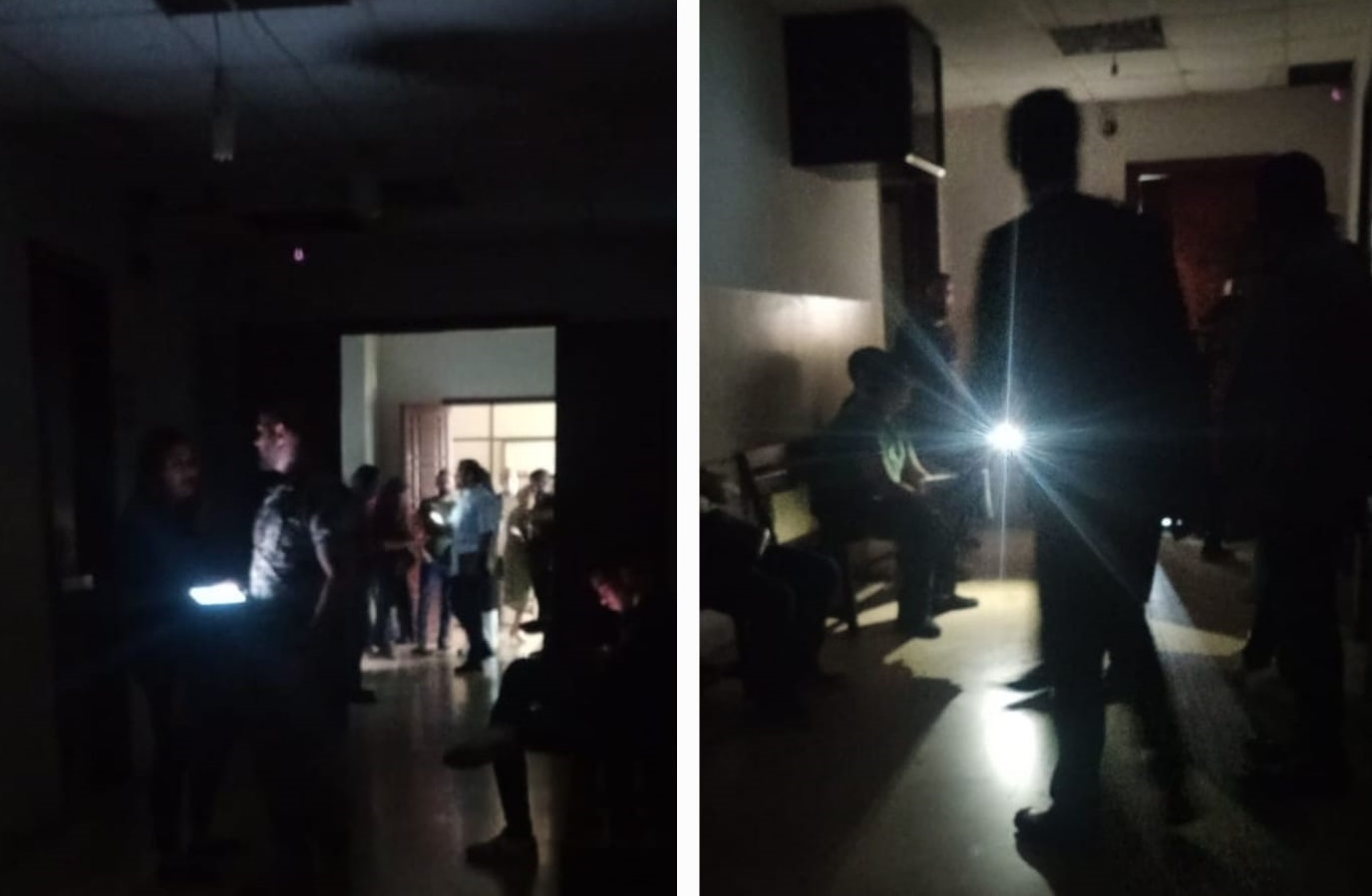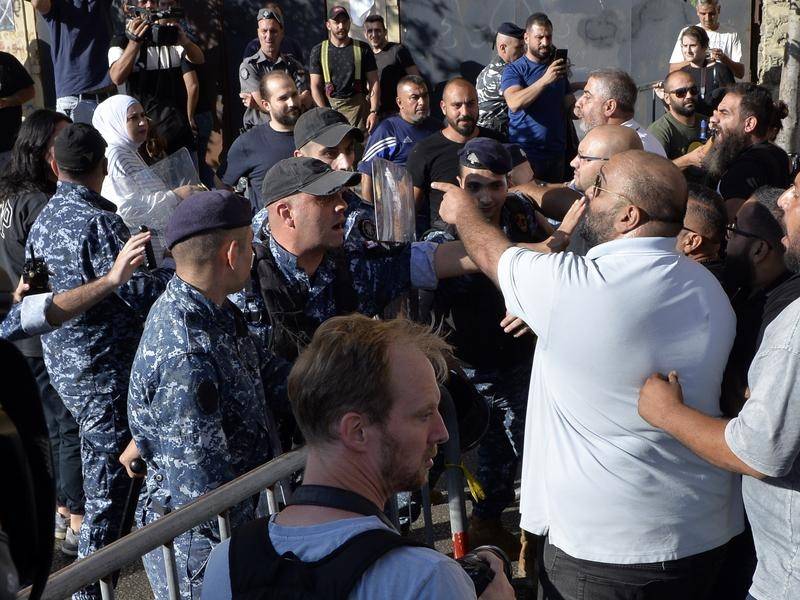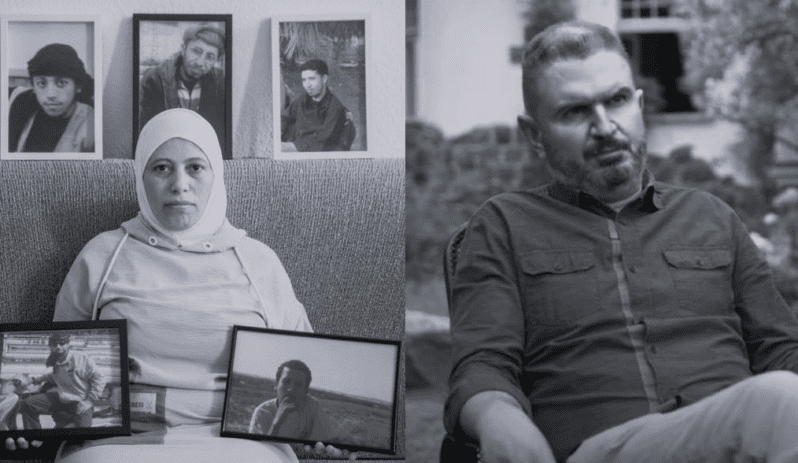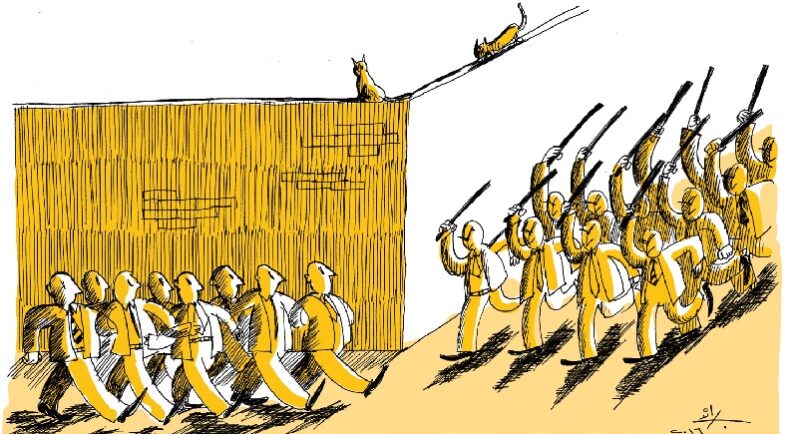The Rise of Egypt’s Exceptional Courts
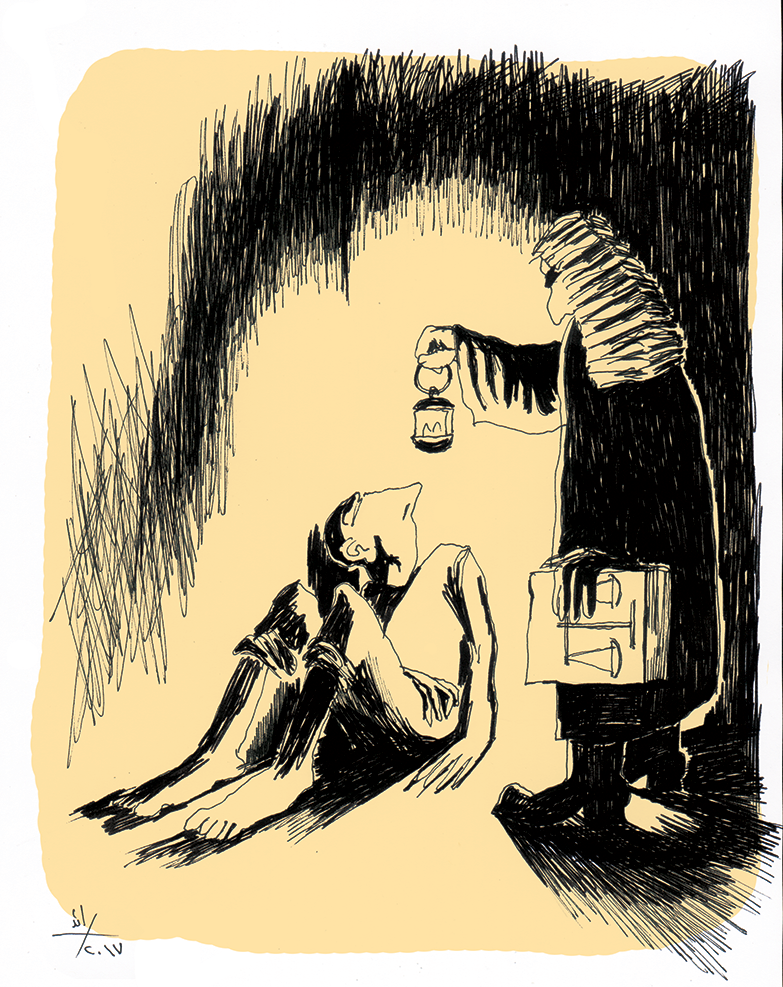
After Egypt’s January 25 Revolution, debate arose over the court-martialing of civilians that occurred during the Mubarak era. These court-martials were resumed during the Supreme Military Council’s rule following the revolution. This debate loomed over the preparation of the 2012 and 2013 constitution drafts. Many activists argued that civilians should not be tried before the military judiciary after the revolution. They pointed out that exceptional and military courts – which had been a sword drawn over the necks of opponents for decades – needed to be abolished.
Exceptional and military courts have been set up and exploited politically throughout Egypt’s history. For example, anyone who participated in, contributed to, or provided assistance to the ‘Urabi revolt was tried on the charge of high treason, conspiracy, rebelling against the Khedive, and disobedience before the military court in 1884.[1] Perhaps the most famous exceptional court in Egypt’s history is the Denshawai court of 1906. It was an “ad hoc court” established to try Egyptian peasants on the charge of attacking English troops when the peasants were actually the ones who had been attacked.[2] The court issued harsh sentences ranging from hard labor to flogging to execution.
After 1952, under Nasser, exceptional and military courts were further established to remove political opponents both within and beyond the military. The trials began with the officers of the so-called “artillery plot”. These officers had started publicly criticizing a number of members of the Revolutionary Command Council (RCC), and a rumor had spread that they intended to apprehend the RCC’s members. The officers were arrested and brought before a court-martial composed of the RCC itself.[3] The same occurred many more times. For example, Hasan al-Damanhuri was tried before the RCC for his opposition to the arrest of the artillery officers, the Revolution’s Court tried some political leaders, and the People’s Court tried Muslim Brotherhood members.[4] Additionally, the RCC confronted the first demonstrations that occurred during its rule, namely those by the workers of the textile mill in Kafr El Dawwar, by having those workers court-martialed.
In the Sadat and Mubarak eras, the court-martialing of civilians increased, and exceptional courts were established on the pretext of the threat the accused persons posed to national security, the official state of emergency, and fighting terrorism.
This article will discuss the most important exceptional courts established in Egypt since 1952 and, in doing so, the court-martialing of civilians.
1. The Nasser Period
a) The First Court-Martial of Civilians
On August 12, 1952, workers of the Misr Spinning and Weaving Company in Kafr El Dawwar held a strike, sit-in, and demonstration, demanding higher wages and the election of a union that speaks for them.[5] However, the company summoned the police forces, which opened fire to intimidate the workers. Tanks surrounded the mill, and elements appeared among the workers that diverted the peaceful strike toward acts of violence and sabotage. The sit-in ended with the arrest of more than 500 workers and the deaths of four workers, two soldiers, and several policemen.[6] Afterward, the RCC formed a military council to try the arrested workers for incitement and involvement in the events. That the trial of 29 workers occurred within just two days indicates that it was merely a show trial. The ruling was delivered in the mill’s courtyard in front of the rest of the workers and in the presence of tanks.[7] Mustafa Khamis and Muhammad al-Baqari were sentenced to execution, and a number of workers were sentenced to life imprisonment with hard labor.[8] The ruling reflected the government’s desire to send a clear message that any protest movements or opposition would be met firmly and with force.
b) The Treachery Court
The Treachery Court was the first “legal” exceptional court to arise after the July 1952 military movement. It was established on December 22, 1952, by Law no. 344 of 1952. The Treachery Law applies to anyone who has been a public official, a minister,or a member of one of Parliament’s houses, the municipal or village councils, or the directorate councils. It also applies to anyone who has been charged with a public service or has a general representative capacity. The introduction of this law led to the trial of a number of icons of pre-1952 political life in Egypt. The law criminalized actions that could corrupt political life or harm the country’s interests, as well as influence peddling to obtain a benefit, advantage, job or position in the public bodies for the perpetrator or another person. It also punished actions and behaviors intended to influence judges.[9] The law stipulated that the court consists of members of the judicial body appointed by the minister of justice – namely a counselor [a senior judicial rank] from the Court of Cassation as its president and two counselors from the Cairo Court of Appeal – in addition to four military officers ranked no lower than major and appointed by the commander-in-chief.[10] The military members’ predominance over the judges gives the court the character of a court-martial and shows that the RCC was controlling the trials with the aim of removing its opponents from political life.
c) The Revolution’s Court
The Revolution’s Court was established in 1953 on the pretext of trying persons accused of high treason and acts that threaten Egyptian national security. The court was composed of Abdel Latif Boghdadi as president and Hassan Ibrahim and Anwar Sadat as members. All three were members of the RCC.[11] Hence, the RCC was simultaneously the prosecutor and the judge, and the court was in fact a court-martial trying civilians on no legal or constitutional basis. Consequently, it could not conduct fair trials.
Besides persons charged with high treason, the court tried persons charged with acts that it deemed to be directed against the regime at the time or the foundations of the revolution, with corrupting political life, or with acts that contributed to bad governance and facilitated colonialism. The RCC could bring any case before the court, even if it was pending before the regular judiciary or any prosecuting body as long as no ruling had been issued yet.[12] This constitutes a blatant attack on the judiciary.
In 1967, Decree-Law no. 48 of 1967 was issued to reestablish the Revolution’s Court. The law specified that the court examines cases referred to it by the president of the republic. These cases should pertain to the crimes of a political nature stipulated in the second volume of the Penal Code or in the Military Provisions Law, or to crimes infringing the state’s well-being within or abroad, or deemed to be against the revolution’s principles.[13] The law’s second article specified only that the court has three members and is formed via a decision from the president of the republic. It did not clarify whether these members are military personnel or judges. To this day, the law establishing the Revolution’s Court remains in force, for no parliament has repealed it.
d) The People’s Court
In October 1954, as another step toward eliminating political opponents, the RCC issued a decision to try the Muslim Brotherhood’s leaders before the People’s Court, alleging that they tried to assassinate Nasser. On October 26, 1954, in an event known as the “Manshiyya Incident”, a number of bullets had been fired at Nasser while he delivered a speech on the signing of the agreement to evacuate British troops. The exceptional court was composed of Gamal Salem as president and Hussein el-Shafei and Anwar Sadat as members. Once again, it was a distinctly military tribunal for trying civilians. The court tried 867 Muslim Brotherhood members, sentencing 245 to various punishments.[14] Seven were sentenced to death.[15]
e) The Establishment of the State Security Emergency Court
In 1953, then Minister of Justice Ahmad Husni issued a decision to establish the State Security Prosecution. This prosecution department was to investigate and level charges for felonies and misdemeanors that harm the state’s general interest, crimes committed via newspapers and other means of publication, striking and sit-ins by students and workers, crimes of demonstrating and assembling, and military felonies. Establishing this prosecution office was the first step toward establishing the State Security Courts that persisted until the Mubarak era. Moreover, the decision explicitly deemed demonstrating, assembling, and holding sit-ins to be crimes threatening state security requiring special investigation procedures.
In 1958, and in another step toward codifying the State Security Courts, Nasser issued a law regulating states of emergency and referring crimes that contravene the president’s orders to the summary and supreme State Security Courts, which were known as the “State Security Emergency Courts”.[16] While the courts were, in principle, composed of judges from the first instance and appellate courts, the law gave the president the right to order that a summary state security department consist of one judge and two armed forces officers and that a supreme state security department consist of three counselors and two commanding officers.[17] The law thus paved the way for quasi court-martials. The president would also have the right to order that the aforementioned courts be composed of officers in the regions subject to a special judicial system or for specific cases.[18] This renders these trials court-martials of civilians, especially as the president has the right to refer crimes punished under ordinary law to these courts.[19] The rulings issued by these courts are subject to the same rules governing those issued by the aforementioned military and exceptional courts. Hence, the rulings cannot be appealed, and they become final once confirmed by the president of the republic. The president may reduce, substitute, annul, or stay the execution of the sentence. He may also annul the ruling and dismiss the case or order a retrial.
2. The Sadat Period
a) Courts of Values
In 1980, then president Anwar Sadat issued the Law of Protecting Values Against Shameful Conduct.[20] This law deemed deviation from society’s fundamental values to give rise to political liability therefore warranting punishment through the deprivation of certain political rights for six months to five years.[21] The law punished advocating denial of divine canons and their provisions, inciting adolescents and young people to forsake religious values or loyalty to the state, and publishing or broadcasting false or tendentious news, statements, or rumors or provocative propaganda if doing so harms the country’s national interest. It also punished acts criminalized by the Law of National Unity, the Law of Political Parties, and the Law Protecting the Home Front and Social Peace. The legislator thus aimed to criminalize acts that fall within the scope of freedom of thought, expression, and belief and the exercise of political rights. In another step toward creating an exceptional system, the law established an investigating and prosecuting authority to exist alongside the Public Prosecution, namely the “socialist public prosecutor”, stipulated in Article 179 of Egypt’s 1971 Constitution.
b) Codifying the State Security Courts
Article 171 of Egypt’s 1971 Constitution stipulated State Security Courts and stated that the law would regulate their organization and competence. This gave the courts a constitutional basis.
On May 31, 1980, Sadat issued a law establishing the State Security Courts.[22] This law created a parallel judicial system to examine specific cases by establishing summary and supreme State Security Courts in the area of jurisdiction of every summary and appellate court. This system would operate even in the absence of a declared state of emergency. The law stipulated that judges of military courts could join the Supreme State Security Court such that it would have a military character. The court would examine violations of Penal Code articles pertaining to harming the government’s security from within or abroad; explosives; bribery, embezzlement of and encroachment on public funds, and treachery. It also examines violations of the Law to Protect National Unity, the 1977 Decree on Protecting the Nation and Citizen, and the law regulating political parties.
Conclusion
On April 11, 1970, in the first meeting of the Citizens’ General Committee for the Battle, Nasser expressed his vision of the exceptional courts and deemed them a guarantee of the judiciary’s independence:
In reality, from 1952 till today, we haven’t interfered in the judiciary. We had a principle: if we interfere in the judiciary and try to tell judges how to rule – if I promote so-and-so, do this and that for so-and-so, bring so-and-so closer, or exclude so-and-so, then I ruin a core function of the country. It was settled that if there was a political matter, we would create a political case, make ourselves judges, and rule as we liked. We would keep the judges away from them [i.e. the defendants], and we wouldn’t interfere in the judiciary. We began this with the People’s Court. The members of the RCC were the ones who tried [the defendants]. This gave the people the sense that this case was political and we had an opinion on it, so we were removing it from the judiciary and we would take responsibility for it or create a revolutionary [court] in this regard. But we never interfered, for the judiciary is, in this respect, the country’s safety valve. However, the opposite has recently appeared. We haven’t interfered, but some people wanted to interfere with judges in 1967 after the crisis that we were in.[23]
This talk expressed Nasser’s vision of the judicial branch as an obstacle to several policy directions, necessitating the establishment of exceptional courts. This discourse markets the exceptional courts as preserving the independence of the regular judiciary by distancing it from politics. These exceptional courts also erode the justice system by judicializing orders issued by the executive branch and open the door for this branch to dominate the judicial branch in one way or another.
The judges expressed their rejection of these courts in a statement issued by the Egyptian Judges’ Club in 1968 after its elections:
While the desire to experiment has sometimes granted authority to judge to people who are not dedicated, specialized judges, this experiment proved a failure in both the distant and recent past … The specialization of judges is a fundamental principle of sound judicial regulation that must be upheld by not infringing on the competences of the judicial branch and not involving non-specialized persons in performing the judicial mission.[24]
This statement was issued after the crisis that arose between former president Nasser and the judges on several grounds. He had first attempted to incorporate the judges into the Arab Socialist Union and make continued membership in the judiciary contingent on membership in the party. This was followed by attempts to separate the Public Prosecution from the judicial branch, a trend toward incorporating regular citizens into the composition of the courts, and then an attempt to control the Egyptian Judges’ Club. All these attempts failed.
Because of this desire for control and to judicialize executive orders, the legislator in the Nasser and Sadat eras furthered the establishment of exceptional courts and consolidated the military judiciary’s power to try civilians. This led to the elimination of all opponents – Islamists, communists, or otherwise – particularly during the Nasser era. These courts lacked fair trial standards and violated the right of defense, and they formed an exceptional judicial system parallel to the regular one. This helped weaken the judiciary’s prestige, especially as some of these courts included judges in their composition.
While former president Mubarak did not establish any new exceptional courts, he amended the aforementioned laws on many occasions. He also used the aforementioned courts to topple many of his opponents and try Islamists on terrorism charges. These courts – especially the military ones – continued to be used after the January 25 Revolution to topple opponents and promptly throw them into prison.
This article is an edited translation from Arabic.
[1] See Ahmad Hishmat, “al-Muhakamat al-‘Askariyya li-l-Madaniyyin: Qayd Dusturi fi Raqabat al-Thawra”, published in January 2015 by the National Community for Human Rights and Law.
[2] See Ghada Naim, “al-‘Ar Yutarid Qudat Dinshaway”, Veto, June 23, 2014.
[3] See the memoirs of Mohammed Naguib: Kuntu Ra’isan li-Misr, Almaktab Almasry Alhadith.
[4] Ibid.
[5] See Nur Mansur, “Thawra Yuliyu wa-l-Dimuqratiyya 1952-1954”, Awraq Ishtirakiyya, July 1, 2007.
[6] See Khalid Mahmud, “Ismi Mustafa Khamis: Yukshaf al-Maskut ‘anhu fi Qadiyyat Khamis wa-l-Baqari”, Shorouk News, February 5, 2014.
[7] See the documentary Ismi Mustafa Khamis, written and directed by Mohammad Kamel El-Kalyubi.
[8] See Khalid Mahmud, op. cit.
[9] See Article 1 of the law.
[10] See Article 3 of the law.
[11] See Naguib’s memoirs, op. cit.
[12] See Taha al-Dali, “al-Sadat wa-Mahkamat al-Thawra”.
[13] See Article 1 of the law.
[14] See Naguib’s memoirs, op. cit.
[15] They were Mahmud Abd al-Latif, Yusuf Talaat, Ibrahim al-Tayyib, Hindawi Dawir, Shaykh Muhammad Farghali, Abdul Qadir 'Oudah Shaheed, and Hassan al-Hudaybi (the latter’slast’s sentence was commuted to life imprisonment).
[16] Law no. 162 of 1958.
[17] See Article 7 of the law.
[18] See Article 8 of the law.
[19] See Article 9 of the law.
[20] Law no. 95 of 1980. The law was abolished in 2008.
[21] See Article 2 of the law.
[22] Law no. 105 of 1980. The law was abolished in 2003.
[23] See Ahmed Mekky, “al-Sidam Bayna al-Nizam al-Nasiri wa-l-Quda” in al-Quda wa-l-Islah al-Siyasi, published by the Cairo Institute for Human Rights Studies.
[24] Ibid.
